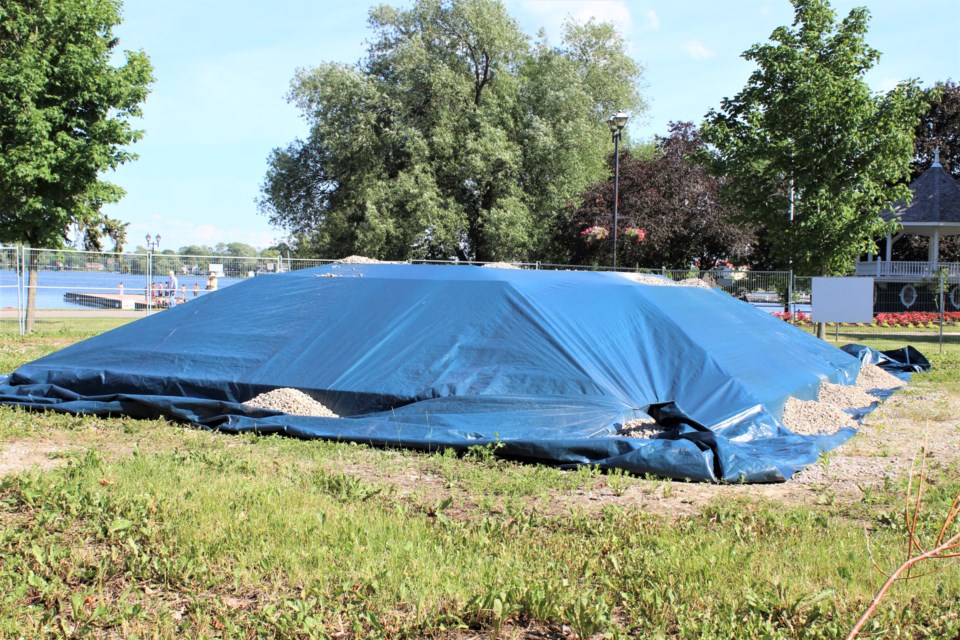The current controversy around statues of historical figures has led Simcoe North’s MP to question the timeline of the return of the Champlain Monument to Orillia’s Couchiching Beach Park.
Bruce Stanton has been speaking with Parks Canada representatives about the matter since he attended a Canada Day protest against the monument.
“Given the recent commentary around historic monuments and the recent protest on July 1, the sentiments around these kinds of discussions and the defacing of the monument all gave rise to my inquiry,” Stanton said, adding he has asked Parks Canada if it is “thinking any differently about what that timeline looks like.”
The Samuel de Champlain Monument Working Group, which included representatives from Orillia, Rama First Nation and Parks Canada, provided recommendations for the statue’s return after it was removed for restoration and repairs. The report was released in July 2019.
“That was a year ago. Some other events have transpired,” Stanton said, referring to reignited controversy not only about the Champlain Monument, but also about monuments in the United States. “I know full well how valuable the monument is to the city, (but) the context around the commemoration of these historical figures is different.”
He wants to see the working group reconvene and discuss whether recent events have changed any opinions about the monument’s return.
“This has been an excellent, co-operative process all along,” he said, describing it as a “good example” of reconciliation. “I trust their judgment on this.”
Stanton also said he supported the four key recommendations of the working group (which can be found at the bottom of this article), but the issue is timing. He is waiting to hear back from Parks Canada, which initially wanted the process of the monument’s return to be completed by mid-August.
Mayor Steve Clarke was a member of the working group. It’s a role he will take on again when another working group meets to discuss what the other components of the monument, aside from Champlain himself, will look like.
“I do believe that the monument does need to be returned in a fashion that the working group recommended,” Clarke said.
While he is “anxious to see the project move on,” he said he can appreciate concerns about the timing of the monument’s return.
“I do understand the logic behind that,” he said. “It’s an interesting time right now. We need to do what’s right.”
Clarke said he wants the statue to be returned because it’s better to expand on than it is to erase the history of Champlain’s relationship with Indigenous people.
“That story needs to be told accurately,” he said.
Clarke feels the situation with the Champlain Monument isn’t the same as some of the statues in the States that are being targeted, since those are monuments to Confederate figures.
“Those monuments are not that comparable with Champlain,” he said, adding the French explorer had a “respectful” relationship with Indigenous people.
Four key recommendations from the working group
-
That the Samuel de Champlain Monument be re-installed with only the central figure of Samuel de Champlain atop the plinth and that this installation occur immediately.
-
That the First Nations figures along with the figures of the Fur Trader and Missionary be the subject of further consultation with First Nations. It is the hope of the Samuel de Champlain Monument Working Group that future work, with the aim of re-imagining their presence in the immediate vicinity of the original Monument, will result in a meaningful and concrete example of Reconciliation.
-
That the text of the original Monument’s “in-set plaque” be updated so that it will honour the original intent within the context of contemporary knowledge and wisdom.
-
That additional interpretive signage/pieces be developed and created with the participation of First Nations representatives to tell a historically accurate story of Samuel de Champlain and his relationship with First Nations.
Source: City of Orillia



